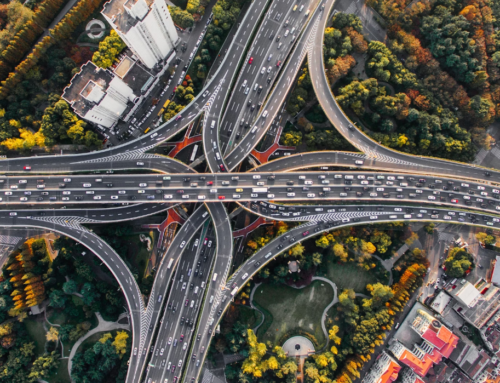Standards digitalization is a priority of future standardization work in China, as the National Standardization Development Outline puts forward “promoting the transformation of standardization in a digital, networked and smart way”. When delivering a report at the National Standardization Work Conference earlier this year, Tian Shinhong, Vice-Minister of State Administration for Market Regulation (SAMR) and Administrator of Standardization Administration of China (SAC), stressed to “vigorously promote the development of machine readable standards, and explore the new management mechanism of national standards in the context of digitalization”, and “strengthen the research on standards digital technologies, seize the trend of cutting-edge technologies and enhance the fundamental theories of standardization”.
China Standardization Press had an interview with Wu Hequan, Academician of the Chinese Academy of Engineering and Chair of National Standardization Expert Advisory Committee to find out his insights into standards digitalization and suggestions for future work.
Why standards digitalization is so important in the digital, networked and smart era?
Wu Hequan: The government work report of China in 2022 puts forward accelerating the integration of digital technologies and the real economy. In fact, the integration is reflected in many aspects such as how standardization integrates with digital technologies. Standards digitalization refers to using digital technologies to empower standards and their whole life cycle, so that the rules and characteristics of standards can be read, transmitted and accessed by digital devices. It is expected that standards can be developed, applied and promoted in a better way by using the new generation of digital technologies. Standards digitalization includes two parts: standards format and standardization methods.
China now is carrying out research on this subject, so is the international community. International Organization for Standardization (ISO) launched a SMART programme to produce Standards that are Machine Applicable, Readable, and Transferable (SMART), which is a milestone of standardization development.
The change from paper format to machine readable format becomes possible due to the development of digital technologies, which also meet the demands of social development. As standardization has penetrated into all aspects of the real economy, and machine has replaced humans in several scenarios, machine readable standards have become an irresistible trend of social development.
Take the surveillance videos in smart cities as an example. Tens of thousands of traffic surveillance cameras are connected to the traffic control center, but the scenes they took cannot be displayed simultaneously on the screen in the monitor room. It works in this way that the surveillance videos of each road are displayed on the screen for a minute. We hope that in the future the surveillance videos of all roads can be edited into a dynamic video for city traffic via artificial intelligence technologies to greatly improve the efficiency of monitoring. Another possible method is to let computer read these videos directly so that computer can understand the whole picture without human assistance. It is not only about the changes of reading methods, from people to computer, but also about the changes of some connotations, rules or indicators in standards.
We are now entering a new era of information technology; the whole society is evolving in a more digitalized, networked and smarter way. In the standardization area, it is reflected as standards digitalization.
What changes will standards digitalization bring?
First of all, standards format will change. In the past, standards were in paper format. If they are machine-readable in the future, standards will be searched and found by machine, then read and understood by machine, and at last applied by machine.
It is relatively easy to search standards by machine. However, it is very difficult to realize machine-readable. Why? Because standards focus on specific fields. The model and algorithm of artificial intelligence are improved through a lot of data training, which cannot cover all professional areas. Second, there is non-structural data in standards such as formula, charter and curve, which are difficult to understand by computer. Lots of work need be done to realize the visualization and readability of standards.
How to make standards machine-readable? We can start with the descriptive language of standards. Extensive Markup Language (XML) is now used to describe standards. Open-source software can also be used to describe standards, but only a limited number of standards are suitable for open-source software.
In addition to standards format, standards digitalization also means that digitalization runs through the whole life cycle of standardization to facilitate the development, application and promotion of standards. First of all, open-source software, such as an online collaborative platform, is used to accelerate the process of standards development and revision, encouraging more people to participate in the process and greatly reducing the development cycle. Generally speaking, standards are now revised every few years; however, open-source technology can speed up the development and revision of standards via dynamic upgrading.
Second, it will be easier to make standards comparison and find the relevance between standards and intellectual property. Using big data and artificial intelligence, we can make a quick comparison between international standards and national, association ones. In addition, standards digitalization helps us find the relevance between standards and intellectual property. For example, it is easy to retrieve the declaration information of stakeholders in the development process, whether the patent holder complies with the FRAND (Fair Reasonable and Non-discrimination) principles to give permission, or whether relevant intellectual property agency authorizes the patent or not, and so forth.
Third, it will support the supervision of standards application. As standards are digitalized, it is easy for regulators to check the compliance of standards implementation by examining the data.
Fourth, standards information can be retrieved quickly. When standards are machine readable, a great number of standards texts can be read and retrieved quickly by computer. Computer even can compile these standards texts into working instructions to guide standards implementation accurately. Standards digitalization will be not only beneficial to standardization technical committees, but also helpful for regulation departments and standards users.
What challenges will standards digitalization bring to technology and system?
Standards digitalization, a milestone in the standardization development history since the Industrial Revolution, is a main characteristic of standardization in the digital economy era. It creates a golden opportunity for innovation, boosts the reform of standardization methods and management system, but also brings unprecedented challenges.
First, management of standardization. Previously, standards are designed for people. But different people may have different understanding of standards, so every standard clearly indicates that who is responsible for the interpretation. If standards are read by machine, how can the ambiguity of standard provisions be understood without misinterpretation? Therefore, even in a machine-readable era, standards cannot be completely handled by machine, and they still need the intervention of people. When the intervention of people is needed, how to intervene and all such issues should be specified in the management rules.
Second, artificial intelligence technologies. Things work out when standards are read and applied by machine in 99% of scenarios; but erroneous judgement could happen in the rest. So how to avoid the misjudgment of artificial intelligence? When things go wrong about the machine readable standard, it is difficult to define who is responsible, the designer of machine algorithm, machine user or owner? Even so, we should not give up the efforts of promoting standards digitalization, as it is impossible to advance technology without attempts and application. To avoid risks, machine-readable standards can start from those standards that may not have a big impact even with erroneous judgment.
Third, cyber security. Machine readability inevitably uses computer system, and cyber system is very easy to be attacked. To realize standards digitalization, we should attach great importance to the security of relevant information systems. More importantly, since the reading of key standards cannot solely rely on machine, people should make the final check on the results.
What shall we do to realize standards digitalization?
It is a long way to go, as the task is too arduous. We must have a long-term plan and implement it in an orderly way.
First of all, the top priority is to develop a standard for machine-readable standards. The standard will specify the elements of machine readability and supporting technologies. Which are the most fundamental metadata of machine-readable standards. The descriptive languages of standard should be defined, such as XML, JSON (JavaScript Object Notation) or others. If multiple languages are used, the compatibility problems need to be solved. The unified format of expression by machine should also be defined for formula, arithmetic, flow chart, circuit diagram, curve chart, etc. Now, China National Institute of Standardization is assigned by SAC to conduct research in this area.
ISO, ITU and other standardization organizations overseas are also carrying out the research on standards digitalization. By now, there is no globally recognized machine-readable standard. But China is exploring in some areas. In 2017, the series of Chinese national standards for machine readable passport, visa and official travel documents, including GB/T 34974.1-2017, Identification cards—Machine readable travel documents—Part 1: Machine readable passport, were published, which adopt the ISO/IEC 7501 series. Because there is a chip embedded in passport, machine-readable passport in fact means to read the information in the chip. It is difficult to promote this method in machine-readable standards, as it is almost impossible to embed a chip in every standard.
Second, a professional platform needs to be established to support machine readability. Standards cannot be directly understood by artificial intelligence. We can use big data technology to establish a knowledge spectrum based on a great amount of standards texts, so as to find the pattern of machine readability. China Electronics Standardization Institute (CESI) is conducting the fundamental research on the specifications for standards knowledge spectrum, but relevant standards are not published yet.
As standards cover various areas, common knowledge spectrum is not enough. Standards knowledge spectra for professional fields should be developed together with a batch of cloud platforms for standards machine readability, covering the areas of machinery, electronics, biology, chemical industry, metallurgy, building, etc. All of these work needs the overall planning and coordination of SAC, so that the platforms can be set up to promote the application of standards digitalization.
Third, the training of professional standards drafters is important. Many standards drafters are well trained and experienced. They know how to draft standards, how to make the language simple and clear. But these standardization veterans may not be able to draft machine-readable standards by using XML language. On the other hand, IT experts are not familiar with the standardization rules and the expertise of a certain area. We need experts with professional background, who is familiar with both standards drafting rules and can use machine-readable technologies. However, such talents are rare, so we must put the training of these professionals on agenda as soon as possible.
Last but not least, management specifications for standards digitalization should be developed. Standards digitalization is a new topic, which involves the standardization life-cycle management. We must specifically modify relevant standardization rules and procedures; otherwise, the format and production mode of machine-readable standards texts will face legal problems. To promote the standardization work at the international level, we must strengthen the international cooperation on the standards digitalization research.
To realize standards digitalization, we cannot rush for actions without overall planning and trials. The most effective application scenario of machine-readable standards is that production equipment automatically implement processes following the requirements of standards. Machine- readable standards can be applied in these cases. It is extremely heavy workload to change all existing standards into machine-readable ones, so we must make a long-term plan.
In a nutshell, standards digitalization is a rare opportunity for the development of standardization, which brings new challenge for standardization research and development, application and management of standards.
Source: China Standardization Magzine, 3rd Issue, 2022




